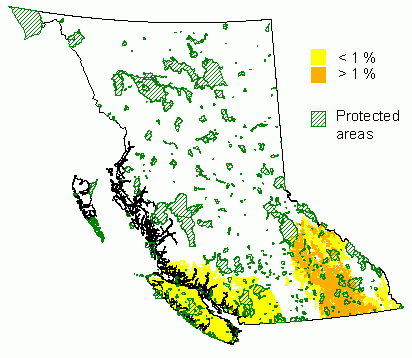 Western white pine
Western white pine
Pinus monticola Dougl. ex D. Don
Distribution and Protected Areas – from Hamann et.al. 2005



Conservation Status Summary – from Krakowski et. al. 2009
“In situ conservation of western white pine requires ground-truthing due to the difficulty in mapping this sporadically distributed species and likelihood of mortality due to blister rust in the interval between inventories. The Maritime SPU, in particular, has insufficient protected areas encompassing an adequate number of individuals. Representation of indigenous populations in inter situ trials also must be revisited: many individuals originally selected for inclusion in the British Columbia tree improvement program have died and census and effective population sizes have been reduced due to mortality. Although there is adequate seed available for ex situ conservation, the range of populations in those collections is narrow, mostly comprising the core populations within each SPU. Since western white pine is an adaptive generalist with no apparent clines or genotype–environment interaction within these SPUs, this may not pose an immediate problem, but the likelihood of capturing rare alleles that may confer blister rust resistance or tolerance is higher over a wider sampling area, including the U.S., focusing on putatively resistant trees.”
REFERENCES
Hamann, A., Smets, P., Aitken, S. N. and Yanchuk, A. D. 2005. An ecogeographic framework for in situ conservation of forest trees in British Columbia. Can. J. For. Res. 35:2553-2561. View online resources for this report.
Krakowski J, C. Chourmouzis, A.D. Yanchuk, D. Kolotelo, A. Hamann, and S.N. Aitken. 2009. Forest Tree Genetic Conservation Status Report 2: genetic conservation status of operational tree species. Centre for Forest Conservation Genetics, Forest Genetics Council of British Columbia, and B.C. Min. For. Range, For. Sci. Prog. Victoria, B.C. Tech. Rep. 054. www.for.gov.bc.ca/hfd/pubs/Docs/Tr/Tr054.htm
